Over the past two weeks, I’ve seen yellow aphids, black pecan aphids and black pecan aphid damage in orchards in Southeast Georgia. I’ve also talked with many county agents who are seeing the same thing. What do we need to know? And what should we do?
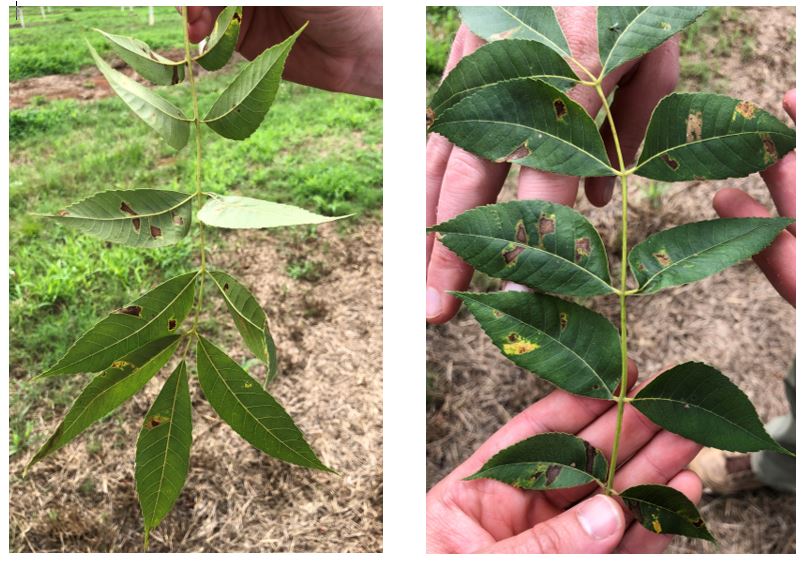
Black Pecan Aphids
First, remember that black pecan aphid adults can be present in our orchards throughout the season. This time of the year they move in and out of the orchard feeding. You may even see the yellow spots on the leaves right now. However, it is later in the season when their populations build, and they start reproducing. We do not want to treat black aphids until we start seeing nymph clusters. I am seeing some adult black aphids now. Notice the difference in adult aphids and parasitized aphids below:
Threshold: When nymph cluster appear on damaged leaves.
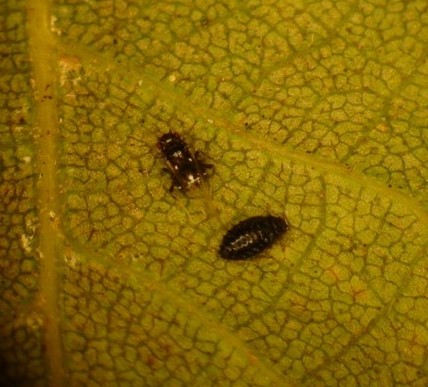
Yellow Aphids
Black-margined aphids and yellow aphids (both yellow aphids) are present in orchards all season, but we usually have a spike in numbers in mid-to late June and again in August. Generally these can be left alone for beneficial insects to feed and not be treated. With yellow aphids, we commonly see a glossy appearance on the leaves called honeydew. This is often concerning and understandably so. However, the tree leaves can take a good bit of honeydew and be fine. The best indicator of treating yellow aphids is if sooty mold begins growing on the honeydew. This can limit photosynthesis.
Threshold: 50 aphids per compound leaf.
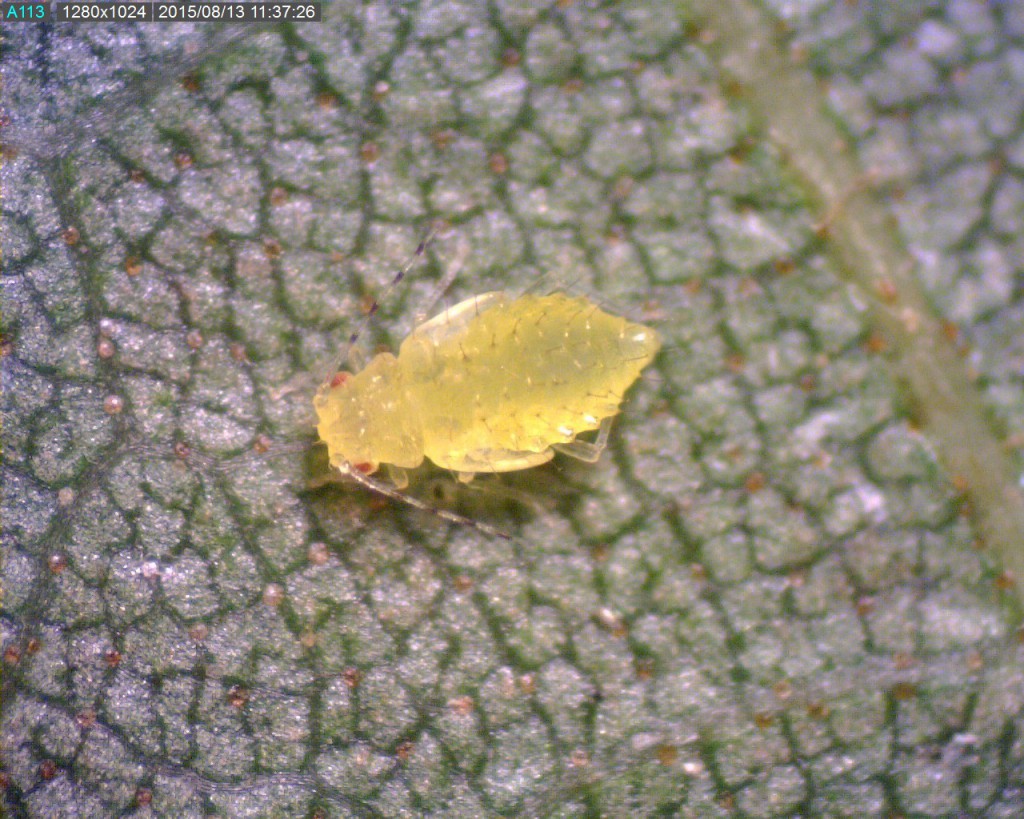
Yellow aphid nymph 
Adult black-margined aphid
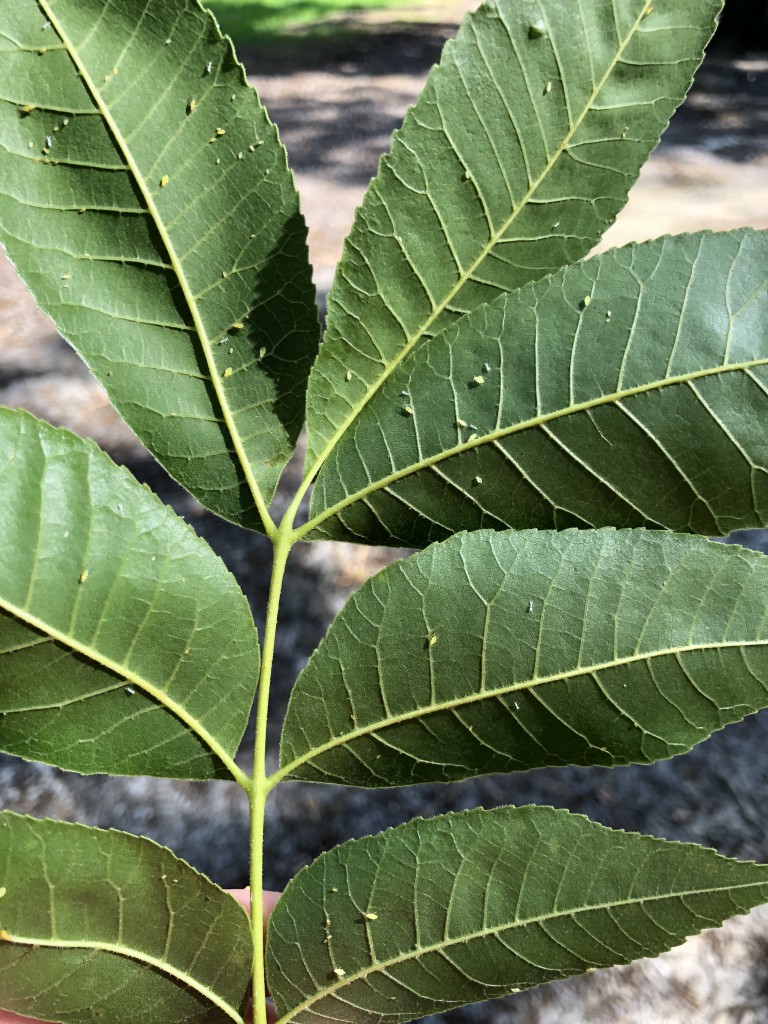
What should we do now?
Aphids are one of the most critical insect pests of pecan and most difficult to control. Insecticide resistance is critical to manage as well. The further we into the season to treat, the better off we are. Here are some things you can do now if you are seeing aphids build:
- The best thing you can do now is DON’T SPRAY BROADSPECTRUM INSECTICIDES!! These are pyrethroids and chlorpyrifos. Many species of beneficial insects work on aphids. These insecticides will harm beneficials and will flare aphids.
- Ignore yellow aphids.
- Ignore black aphids before late July.
- Apply imidacloprid via drip in early/mid June.
- If black aphids flare up w/in 3-4 wks following application, apply aphid insecticides and ROTATE!
- Spraying gibberellic acid, a plant growth regulator, can prevent black pecan aphid injury and inhibit the establishment of black pecan aphids in the orchard. Gibberellic acid does not affect aphids directly and will not control any other pest, including yellow aphids. Three applications should be made at 2-week intervals, beginning in mid-July, applying 10 oz (or 5 oz of ProGibb LV Plus) each time.
- Try to save Nexter late season if needed for black aphids when mites are a problem.
- For a more thorough threshold protocol, please check the UGA spray guide.
Beneficial Insects
When you are in the orchard, look for beneficial insects. The two easiest to locate in the orchard are lady bug larvae and the eggs of green lace wings. If you flip over a compound leaf and see either of these, your beneficial population is good.
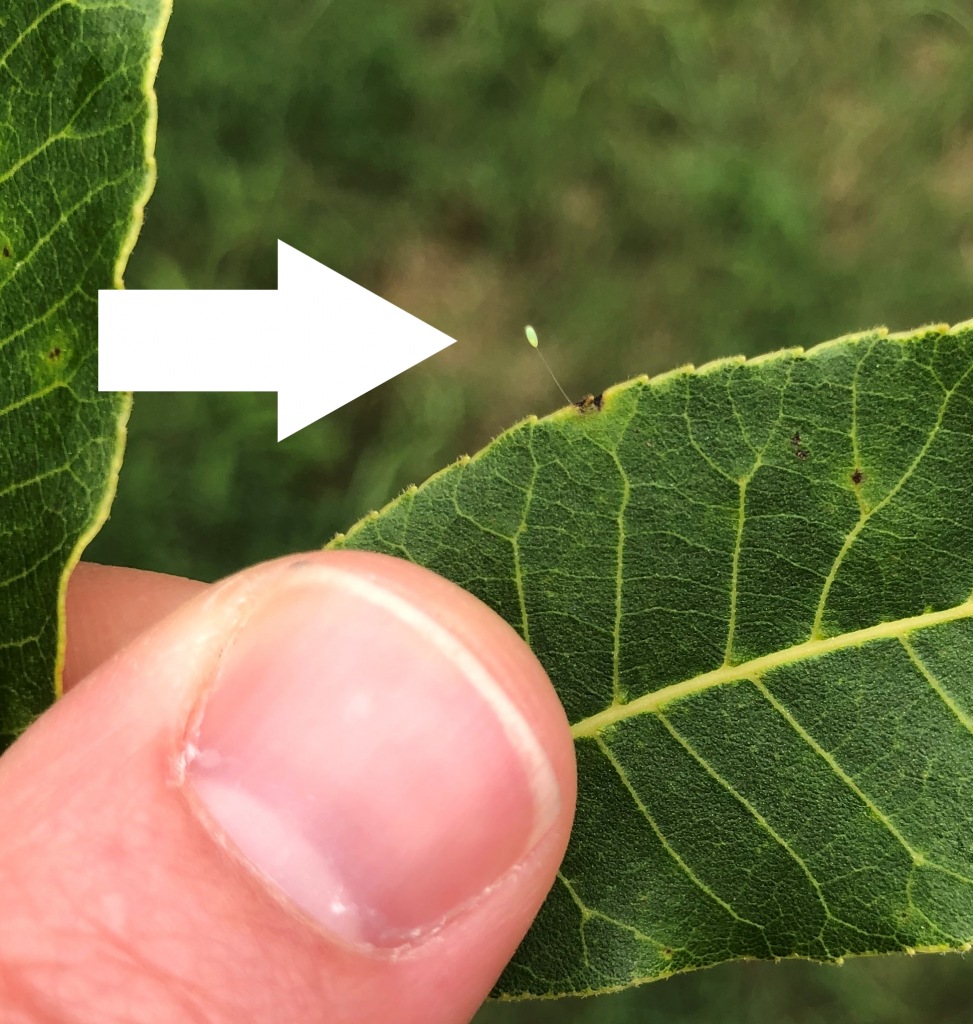
Green Lacewing Egg 
Lady Bug Larvae
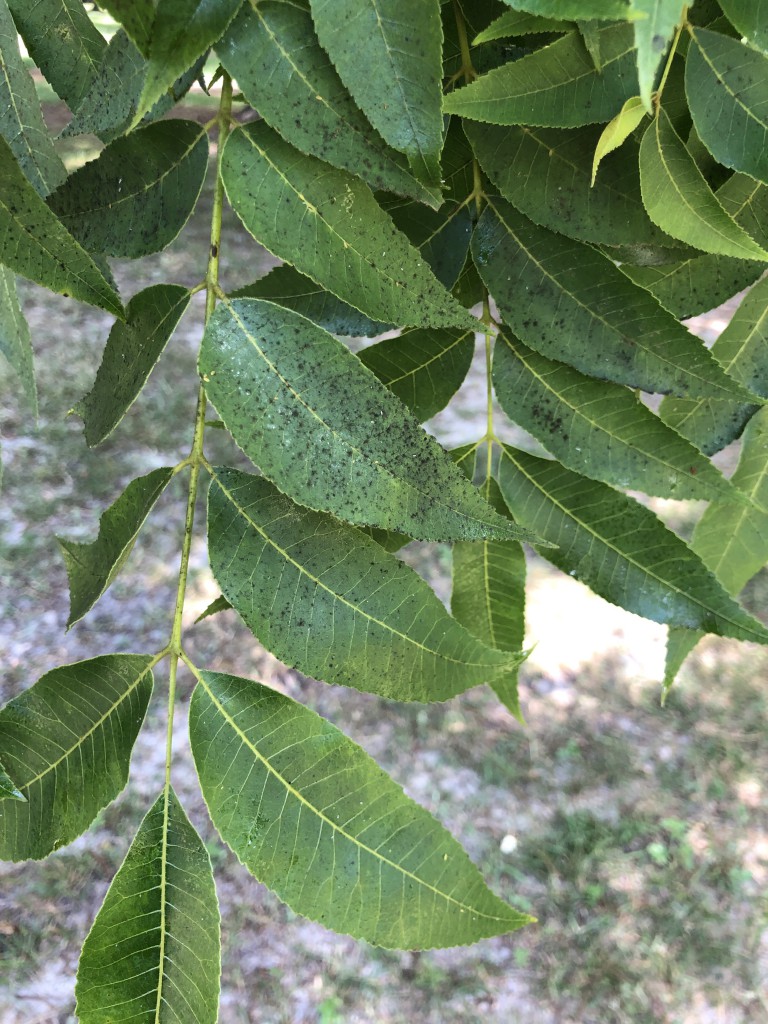
Written by: Andrew Sawyer, Angel Acebes
